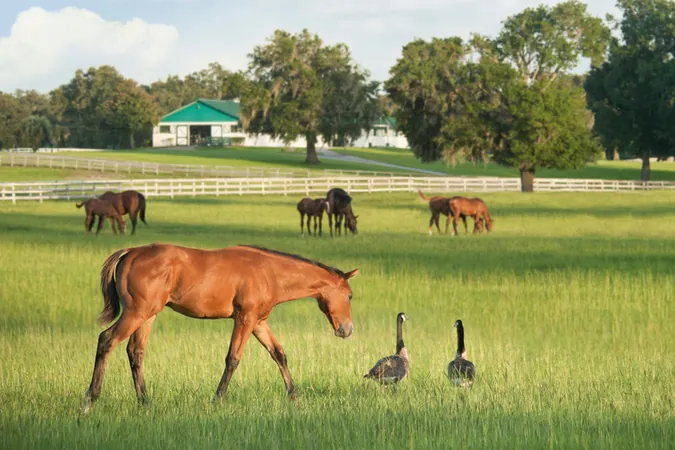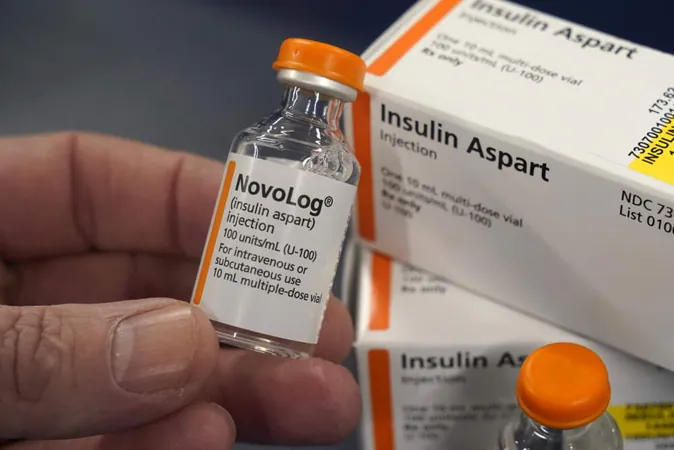
The Alarming Link Between HPAI H5N1 and U.S. Horses: What You Need to Know!
2025-05-20
Author: Nur
Unusual Suspects: H5N1 and Horses
While we often associate influenza with human beings and farm animals, it’s time to turn our attention to an unexpected player—horses. Traditionally, these majestic creatures have battled the H3N8 strain of the influenza virus, which can lead to anything from mild sniffles to severe respiratory issues. Though H7N7 reared its head in the 1950s, it faded into oblivion by 1979, leaving H3N8 as the sole influenza strain to plague our equine friends.
Uncovering the Rare Incidents of HPAI H5N1 in Equids
The Highly Pathogenic Avian Influenza (HPAI) H5N1 has long been considered a non-issue for horses. However, history tells another story. In 2009, sick donkeys in Egypt showed signs of HPAI H5N1 infection, leading to antibodies being detected in many of them. Moreover, a 2020 study revealed low levels of H5 antibodies in wild asses from Mongolia, prompting researchers to take note. Most recently, testing conducted between July and October 2021 on 2,160 horse blood samples revealed two positive tests for H5N1 antibodies. Notably, this evidence suggests that while the instances of HPAI H5N1 among horses are minuscule, they still exist.
The Hidden Danger: Co-Infections in Horses
Imagine a scenario where HPAI H5N1 silently lurks within an infected horse, even in the absence of obvious symptoms. When this horse encounters the prevalent H3N8 virus, a concerning crossroad is reached. The combination of these viruses could lead to genetic exchanges, potentially resulting in a new variant that possesses both the contagiousness of H3N8 and the virulence of H5N1. This hybrid could not only evade vaccinations but also trigger severe respiratory illness in horses—and may even pose a risk to humans in close contact.
A Call to Action: Surveillance is Key!
To safeguard the health of our equine companions, comprehensive research and diagnostic efforts on HPAI H5N1 in horses is essential. Identifying threats before they escalate is crucial.
Urgent Investigations: H5N1's Spread Among U.S. Horses
The emergence of HPAI H5N1 amidst U.S. dairy cows has raised an alarm. Concerns are mounting about whether this virus could leap to other species, including horses. In response, researchers from the University of Kentucky's Gluck Equine Research Center are launching an extensive serosurveillance study involving 1,462 equine serum samples collected nationwide between July 2024 and February 2025.
So far, results are cautiously comforting. Out of 653 positive samples for NP antibodies, only one test returned positive for H5 antibodies, suggesting a low likelihood of HPAI H5N1 spreading to horses across the U.S. However, the dangerous nature of HPAI H5N1 and its rapid mutations necessitate an expanded surveillance program, especially in regions with known outbreaks among cattle.
Stay Alert: The Future Needs Vigilance!
With the landscape of pathogens ever-changing, ongoing surveillance and research are vital to understanding the full impact of HPAI H5N1 on horse populations. As farmers, veterinarians, and researchers unite to confront this challenge, it’s crucial to remain informed and prepared!




 Brasil (PT)
Brasil (PT)
 Canada (EN)
Canada (EN)
 Chile (ES)
Chile (ES)
 Česko (CS)
Česko (CS)
 대한민국 (KO)
대한민국 (KO)
 España (ES)
España (ES)
 France (FR)
France (FR)
 Hong Kong (EN)
Hong Kong (EN)
 Italia (IT)
Italia (IT)
 日本 (JA)
日本 (JA)
 Magyarország (HU)
Magyarország (HU)
 Norge (NO)
Norge (NO)
 Polska (PL)
Polska (PL)
 Schweiz (DE)
Schweiz (DE)
 Singapore (EN)
Singapore (EN)
 Sverige (SV)
Sverige (SV)
 Suomi (FI)
Suomi (FI)
 Türkiye (TR)
Türkiye (TR)
 الإمارات العربية المتحدة (AR)
الإمارات العربية المتحدة (AR)